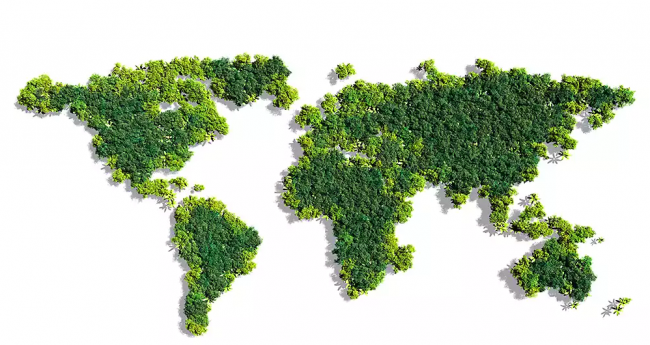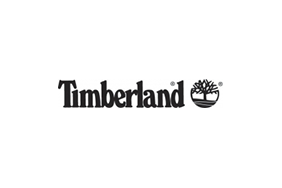Timberland's 2019 Corporate Social Responsibility Report
Progress and performance against 2020 sustainability goals
Published 04-23-20
Submitted by Timberland

Just in time for Earth Day… global outdoor lifestyle brand Timberland releases its 2019 Corporate Social Responsibility (CSR) Report, broken down by its three sustainability pillars: Better Product, Greener World, and Stronger Communities. Timberland’s CSR strategies are designed not only to minimize the negative impacts of its products and operations, but also to activate the brand’s purpose “To Inspire and Equip the World to Step Outside, Work Together, and Make It Better.”
Also, be sure to check out the inspiring video Timberland released today in honor of the 50th Anniversary of Earth Day, promising Nature that we’ll all treat her better when we get back out there, because caring is no longer enough. Nature Needs Heroes.
BETTER PRODUCT
In 2019, Timberland continued to demonstrate its commitment to incorporate responsible materials into Timberland® footwear, apparel and accessories:
99.7% of the leather sourced for Timberland® footwear (and 96.7% of all leather, including accessories and apparel) came from tanneries earning a Silver or Gold rating by the Leather Working Group (LWG) for their progressive water, energy and waste management practices. Timberland, a co-founding brand of the LWG, is proud of its ongoing commitment to only source from Gold/Silver-rated tanneries since inception of the LWG in 2005.
99% of the cotton used for Timberland® apparel (non-licensed) was either organic, US-origin, or sourced through the Better Cotton Initiative. Overall, for all cotton sourced (including licensed apparel and accessories), we increased our use of sustainably sourced cotton 3% year-over-year, achieving 77.5%.
Sixty-eight percent (68%) of Timberland® footwear shipped in 2019 contained at least one major component made of recycled, organic, or renewable (ROR) materials. Recycled PET continues to be the largest source of ROR materials in our footwear, incorporating over 734,473 pounds – the equivalent of 33.6 million half-liter plastic water bottles. To date, the equivalent of over 380 million plastic bottles have found new life in our footwear.
Additionally, Timberland remains committed to reduce the use of materials that are known to have adverse effects on supply chain workers, consumers or the planet. In 2019:
97% of Timberland® footwear was PVC-free;
99% of Timberland® apparel fabric and 100% of Timberland® accessories fabric used non-PFC water repellants; and
The average grams of volatile organic compounds in the adhesives used for Timberland® footwear decreased another 2 grams.
Timberland sourced from a total of 555 factories in 2019, with 99% of these vendors meeting or exceeding our social, labor and environmental expectations. Timberland believes in the power of transparency and for this reason, we disclose our factories on a quarterly basis – we are proud to be one of the first in the industry to publicly disclose the names and locations of our supply chain partners. In addition, Timberland, along with other VF Corporation brands, recently published full supply chain transparency footprint maps on 42 of its most iconic products. The source maps, available on the VF website, help ensure every step in the production of VF’s apparel and footwear meets the company’s standards of quality, sustainability and social responsibility – from raw material extraction to VF distribution centers. The interactive maps display the number and locations of suppliers in a region and users can zoom in for a close-up look at each supplier, including onsite inspections, verifications and associate interviews. Additional products will be added to them maps on a regular basis.
GREENER WORLD
At the heart of Timberland is the core belief that a greener future is a better future. In addition to responsibly sourcing materials for our products and incorporating recycled or renewable content, we strive for a greener future by creating or restoring green spaces around the world, including a goal to create or restore 500,000 square feet of urban green space in the U.S. by 2023. To date, we have greened 268, 578 square feet, surpassing the halfway point of our goal. We also have planted over 10.7 million trees, with 510,036 trees planted in 2019. Having already achieved our 2020 goal to plant 10 million trees, the company has now pledged to plant an additional 50 million trees by 2025. To learn more about our tree planting partners and see updates and stories along the journey, visit Plant the Change.
A greener future also comes by way of reducing our use of non-renewable energy resources and reducing our contribution to landfill waste.
At the end of 2018, 32% of the energy used in Timberland's owned and operated facilities came from renewable sources. Our goal is to source 50% of our energy through renewable sources by 2020 and 100% by 2025. Our 2019 renewable energy data will be available later this summer.
In 2019, Timberland’s owned and operated facilities (including all office, retail and distribution site globally as well as our owned manufacturing facility in the Dominican Republic) were able to divert nearly 65% of the waste generated at these facilities. Our distribution centers are on path to be zero-waste, along with other VF distribution centers; and our retail operations are exploring ways to reduce the use of packaging during transportation as well as at point of sale.
STRONGER COMMUNITIES
At Timberland, service is a part of our DNA. A belief in the power of people to transform their communities is one of our core values. Since 1992, Timberland has offered employees up to 40 paid hours each year to serve in their communities through the brand’s Path of Service™ program. In 2014, Timberland employees celebrated their one millionth hour of community service.
In 2019, Timberland employees around the world served over 72,000 hours, a significant increase over our 2018 result (56,111 hours). Seventy-one percent (71%) of Timberland employees participated in at least one of the 517 service events organized worldwide during 2019.
To learn more about how we serve, click here. Interested in putting together a service event of your own? Download our Service Toolkit to get started!

Timberland
Timberland
Timberland is a global outdoor work and lifestyle brand that’s on a mission to equip and inspire a new generation to step outside and move the world forward. Based in Stratham, New Hampshire, Timberland also has international headquarters in Switzerland and Shanghai. Best known for its original yellow work boot introduced in 1973 to take on the harsh elements of New England, Timberland today offers a full range of footwear, apparel and accessories made with eco-conscious innovation for people who share the brand’s passion for enjoying – and protecting – Nature.
At the heart of the Timberland® brand is the core belief that a greener future is a better future. This comes to life through a decades-long commitment to make products responsibly, protect the outdoors, and strengthen communities around the world. The brand has committed to plant 50 million trees worldwide by 2025, and has a bold vision for its products to have a net positive impact on Nature by 2030, giving back more than they take. To share in Timberland’s mission to step outside, work together and move the world forward, visit a Timberland® store, timberland.com or follow @timberland or @timberlandpro. Timberland is a VF Corporation brand.
More from Timberland

